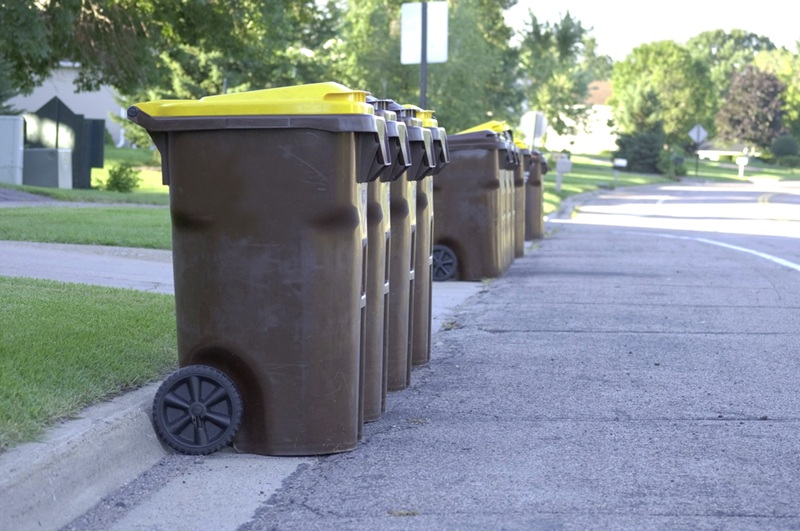Best Practices for Same-Day Rubbish Collection at Home

Ever stared at a growing heap of discarded cardboard, garden off-cuts, and yesterday’s impulse-buy packaging, wondering how on earth you’ll have it gone before guests arrive tonight? You’re not alone.
Same-day rubbish collection sounds dramatic, but with a clear plan—and quick backup when DIY sorting stalls—you can keep chaos at bay.
Resources like www.samedayrubbishremoval.com.au explain pickup timeframes, helping you decide what should leave your driveway first before it piles again.
Reduce Missed Pickups
Missed pickups turn a once-a-day route into a costly loop, burning fuel and time while leaving bins overflowing. A few proactive habits keep everything rolling smoothly.
- Confirm collection in real time. Snap a quick photo or log the pickup with your hauler’s app; proof prevents disputes and unnecessary return trips.
- Stage carts correctly. Place bins three feet apart, lids closed, handles facing the street so the automated arm never hesitates or skips your address.
- Clear access paths. Low branches, parked cars, and snowbanks force drivers to pass you by. A five-minute tidy-up saves a second-day scramble.
- Set calendar reminders. Holidays shift schedules. Sync your phone with the hauler’s alert system and you’ll roll bins out on the right morning.
- Report issues quickly. Use the service portal or chatbot the moment you notice a miss; many firms reroute trucks the same day when notified swiftly.
According to the National League of Cities, Denton, Texas cut go-backs 70 percent by tracking each stop—proof that your vigilance really slashes waste and emissions.
Empower Collection Drivers
Drivers sit at the heart of same-day success, and small gestures from residents make their split-second decisions safer and more precise.
Offer clear visual cues
Bright bin labels, reflective house numbers, and hazard-free curbs help drivers work faster without second-guessing addresses or contents in fading light.
Share neighborhood intel
If construction blocks an alley, message customer service early; dispatch will reroute before the truck reaches the bottleneck, saving everyone a return trip.
Respect turnaround space
On collection mornings, skip the curbside parallel parking so the truck can swing, lift, and exit without risky reversals that jeopardize mirrors and pedestrians.
Source-Separate With Bins
Mingled waste contaminates recyclables, hikes tipping fees, and derails same-day programs. Color-coded bins at the curb keep material streams pure from the start.
- Paper stays dry. A lidded cart prevents soggy cardboard that mills reject—source separation saves an entire bale from landfill fate.
- Glass travels safely. Bottles isolated from paper eliminate shards that shred value and jam sorting equipment down the line.
- Plastics remain viable. Clean PET in its own bin commands higher resale prices, funding better local services without raising taxes.
- Food waste finds purpose. Green buckets channel scraps to composters instead of contaminating recyclables, boosting overall diversion rates.
- Data drives change. Seeing overflowing coffee-cup sleeves in the landfill bin spotlights habits a neighborhood campaign can tackle next.
Method Recycling’s research shows source separation maintains material integrity and fuels a circular economy, meaning your sorted efforts ripple far beyond the driveway.
At-Home Compost System
Curbside organics pickup may lag in some areas, yet backyard composting turns kitchen scraps into garden gold while trimming weekly trash volume.
Pick the right vessel
From DIY pallet bins to sleek tumbler drums, choose a size matching your household’s produce output and yard footprint for effortless aeration.
Balance browns and greens
Layer two parts dry leaves with one part veggie peels; the carbon-nitrogen ratio keeps microbes happy and odors nonexistent, even mid-summer.
Monitor moisture
A handful should feel like a wrung-out sponge. Too dry? Hose lightly. Too wet? Add shredded paper. Simple checks prevent pest invitations.
Harvest finished humus
After roughly eight weeks of turning, the pile becomes crumbly, earthy compost ready to top-dress vegetable beds and cut fertilizer spending in half.
Know what to skip
Meat, dairy, and glossy paper stall decomposition and attract critters. Stick to plant trimmings—EPA guidelines at epa.gov/composting-home list every do and don’t.
Waste Management Curbside
Signing up for professional curbside service streamlines same-day disposal, giving you predictable pickup windows and digital tools to track performance.
Choose the correct cart size
Households that overflow weekly should upgrade to a 96-gallon bin; frequent extras slow crews and often incur tagged-bag surcharges.
Leverage smart-truck alerts
WM’s RFID-enabled fleet records exact lift times, letting you confirm completion inside the My WM portal before the kettle finishes boiling.
Bundle recycling incentives
Some municipalities discount monthly fees when residents meet diversion targets—review your account dashboard to see if last week’s efforts earned a credit.
Bagster Overflow Solution
Renovation debris and seasonal cleanouts create piles too hefty for weekly bins yet too small for a metal dumpster; the foldable Bagster bridges that gap.
- Buy whenever ready. Pick up the bag at home-improvement stores, stash it flat in your garage until project day, and deploy on demand.
- Load responsibly. Three cubic yards fit, but keep nails inward and weight under 3,300 pounds so the crane can hoist it safely.
- Schedule online pickup. Enter your ZIP, pay the collection fee, and Waste Management retrieves the bag within five business days—no need to be home.
- Avoid prohibited items. Batteries, liquids, and appliances will trigger a rejection; check the Bagster FAQ before tossing questionable debris.
- Compare costs. For modest projects, the bag runs cheaper than a roll-off, freeing budget for paint upgrades instead of disposal.
Because the Bagster is single-use, plan to fill it completely—neither space nor money should leave with the crane once it lifts your project castoffs.
Republic Services Roll-Offs
Whole-home remodels or major landscape overhauls generate mountains of waste best tackled with a roll-off dumpster dropped right in your driveway.
Select the proper size
Ten-yard boxes tame concrete and soil, while 30-yard giants swallow demo walls; overestimating saves costly swap-outs during hectic renovation timelines.
Secure drop zone permits
Some cities require right-of-way permission. Submit forms a week ahead so the driver isn’t turned away by code enforcement or a nosy neighbor.
Distribute weight evenly
Place heavy items first, spread across the floor, then lighter clutter on top. Balanced loads prevent tilting when the truck lifts the container.
Early Rubbish Sorting
Sorting waste the moment it’s generated—kitchen, bathroom, or garage—eliminates frantic night-before shuffling and boosts same-day collection accuracy.
- Stage mini-bins indoors. Small color-coded caddies capture recyclables, compost, and landfill items right where they arise, simplifying later transfers outside.
- Train the household. A reminder chart on the fridge turns guessing into habit, so even guests know where the pizza box or tea bag belongs.
- Audit weekly. Peek inside each bin Friday evening; contamination caught early avoids entire cart rejections curbside on Monday morning.
- Label clearly. Icons work better than text for kids and multilingual visitors, ensuring everyone plays by the same streamlined rules.
- Celebrate milestones. Post a family diversion percentage on the bulletin board and reward progress—gamification keeps enthusiasm high month after month.
Wikipedia’s waste-sorting overview notes that early separation consistently raises recycling rates above 60 percent, proving diligence indoors pays off outdoors.
Local Charity Donations
Gently used items don’t belong in the trash truck at all; donation pickups clear clutter and give furniture, clothes, and electronics a valuable second life.
Research accepted items
Each organization has rules. For instance, mattresses may be banned while small appliances are welcomed, so check lists before stacking items curbside.
Schedule strategic pickups
Coordinate charity vans a day before rubbish collection to avoid confusion and scavenging; labeled “DONATION” signs help drivers identify the right pile.
Request tax receipts
Most groups email documentation within 48 hours, allowing you to claim deductions and see the real monetary benefit of thoughtful decluttering.
Prepare items properly
Bag clothing, tape hardware to disassemble furniture, and wipe surfaces; tidy donations increase resale value and respect volunteers’ limited time.
Fleet Electrification Tips
When your municipality embraces electric refuse trucks, residents benefit from quieter streets, cleaner air, and often expanded same-day services fueled by efficiency gains.
Advocate during town halls
Voice support for pilot programs; council members value resident enthusiasm when applying for grants that offset high upfront vehicle costs.
Request transparent metrics
Ask haulers to publish route emissions data so the community tracks progress and understands how electrification improves neighborhood health over time.
Adapt set-out habits
Electric trucks may collect earlier while battery levels peak; rolling bins out the night before ensures the silent morning sweep never misses you.
Celebrate shared wins
Share social posts when the first e-truck appears—positive buzz helps cities justify scaling fleets, as highlighted in VEV’s electrification case studies.
Actionable Wrap-Up
You now hold the essentials for swift, responsible rubbish handling at home. Apply each practice without delay; consistent preparation keeps pickups smooth, cuts landfill impact, and protects your street’s cleanliness. When professional help is unavoidable, review service standards at Same Day Rubbish Removal to ensure your expectations align with benchmarks.






























